6.1.1 The longitudinally continuous upper deck of a bulk carrier suffers
hull girder stress. The longitudinal bending causes an axial force
on the upper deck that may cause cracking of the deck plate at the
locations where the stress is concentrated.
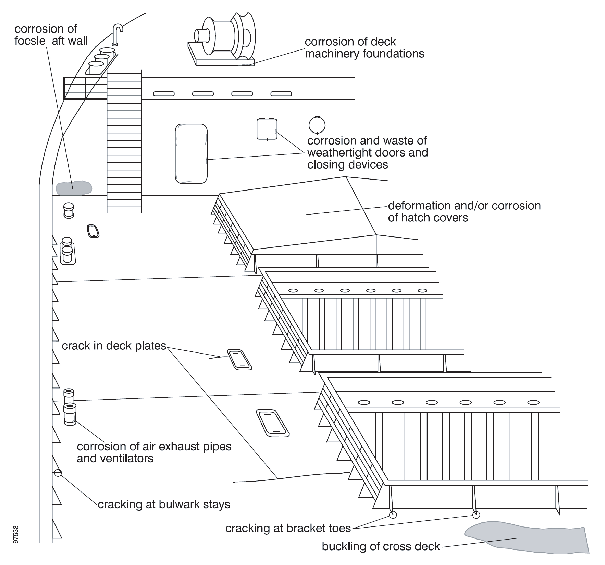
Figure 4 Check points on the upper deck
6.1.2 Bulk carriers have cargo hatchways for the
convenience of cargo handling facilities. These hatchways reduce the
ship's torsional strength and invite concentrated stress at the hatchway
corners which may be evident by cracking of the deck plates in these
areas.
6.1.3 Cross deck strips come under stress by transverse
bending. The transverse bulkheads provide transverse strength to a
bulk carrier and the cross deck strips provide the strength to withstand
the resultant axial forces in transverse direction.
Deformation
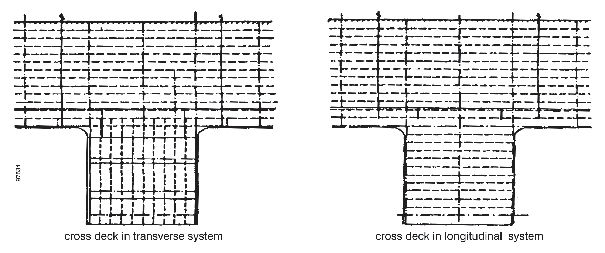
Figure 5 Comparison of stiffening systems for cross deck
6.1.4 Generally, longitudinal beams are arranged
under the longitudinally continuous upper deck outboard of the side
lines of the cargo hatchways. This is called the longitudinal system.
When the deck beams for cross deck strips are also arranged in this
manner, buckling of the cross deck strips may take place due to insufficient
strength against the axial forces acting on them in transverse direction.
The transverse system is the preferred method of construction for
cross deck members. Particular attention should be given to buckling
of the main deck on those ships where the cross deck strips are arranged
in the longitudinal system.
6.1.5 There are various types of cracking in the
upper deck. Those propagating from the cargo hatchways are generally
considered serious to the ship's safety:
-
.1
Hatchway
comers
The large cargo hatchway openings reduce the torsional strength
of the hull and invite stress concentration at their corners on the
upper deck. In this regard, upper deck plating at hatchway corners
is one of the focal points for cracking. Particular attention should
be paid to these areas during inspection.
-
.2
Upper
deck plating at deck fittings
Various metal fittings are welded to the upper deck plating.
These installations may cause stress concentrations at the welded
joints or have defects in the welds. Deck platings in vicinity of
manholes, hatchside coaming end brackets, bulwark stays, crane post
foundations and deck houses, etc. are to be carefully watched for
cracking.
-
.3
Hatch
coamings
Hatch coamings are subjected to hull girder stress. Although
they are not critical longitudinal strength members, they should be
watched carefully to ensure that these cracks do not spread. Cracking
may be initiated at defects in welded joints and metal fittings to
the coamings that will invite stress concentration. Such cracking
is considered serious to ship's safety because it may be the initiation
of a fracture of a large scale.
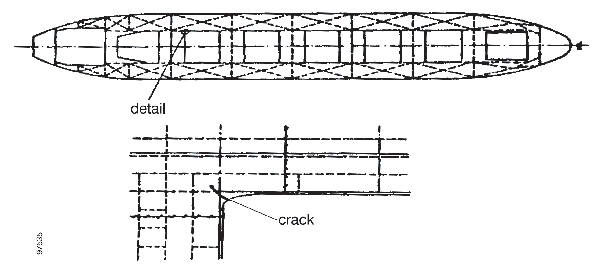
Figure 6 Cracking at hatchway
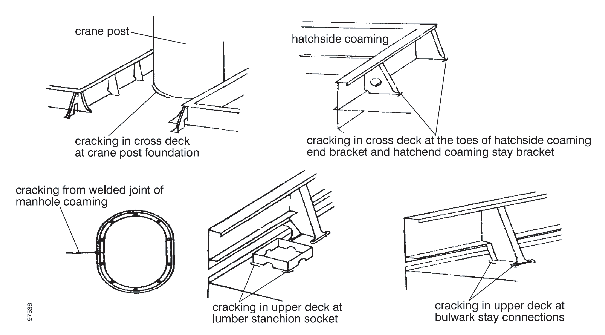
Figure 7 Various crackings in upper deck plating
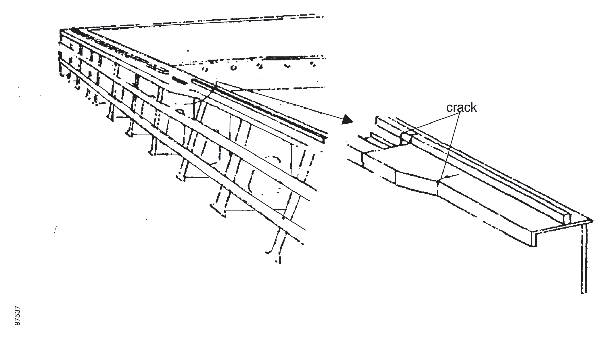
Figure 8 Cracking in hatch coaming
6.1.6 Thinner steel structures on deck, such as
cross deck strips, hatch coamings, hatch covers, etc., are easily
corroded and often holed. The best way to deter corrosion is to keep
the structure well coated and painted. The parts most liable to corrosion
in the upper deck area are as follows:
-
.1
Cross
deck strips
The thickness of cross deck plating between hatchways is designed
about a half of that of main strength deck plating because it is not
a longitudinal strength member. However, cross deck strips provide
an important part in the transverse strength of the ship, and corrosion
and waste of the cross deck plating may be considered serious to the
ship's soundness.
-
.2
Hatch covers
The thickness of hatch covers is approximately the same as that
of cross decks. Holes in hatch covers caused by corrosion lead to
water ingress in cargo holds which may lead to shifting of cargo and/or
problems with the stability of the ship.
-
.3
Hatch coamings
When steam pipes are arranged beside hatchside coamings, the
corrosion progress of the coaming is very rapid. Corrosion holes of
the coaming plates lead to the same problems as those associated with
hatch cover corrosion.
-
.4
Weathertight doors, small hatches and
wall ventilator covers
Not only covers, door plates and coamings but also hinges, gaskets
and clips are to be always kept in good condition.
-
.5
Standing pipes on deck
Vent and sounding pipes from water ballast or fuel oil tanks
and ventilation pipes for closed spaces under the upper deck are liable
to corrosion. If these pieces become holed, seawater comes directly
into the tanks or cargo holds and may cause contamination of fuel
oil, cargo damage, shifting of cargo, and/or stability problems.
-
.6
Forecastle
aft wall
The bilges in forecastle space may cause corrosion of the bulkhead
where it meets the deck. In flush decked bulk carriers, the boatswain
store aft wall may be corroded in the same manner. Large bulk carriers
generally do not have forecastles and have their boatswain stores
down below the upper deck in fore peak spaces. Bilges left in such
spaces also cause corrosion of the aft end bulkheads which separates
boatswain store and No. 1 cargo hold. Such wastage may lead to water
ingress, cargo damage, cargo shifting and/or stability problems.

Figure 9 Examples of comparison of thickness of main deck and cross deck
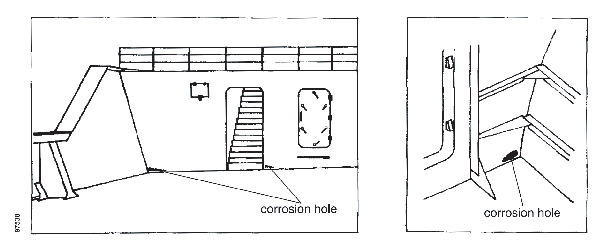
Figure 10 Forecastle end bulkhead